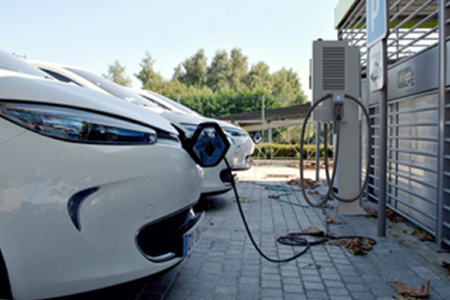A new vehicle charging incentive program in California aims to increase mid-level charging in apartment housing, job sites, places of worship and other areas.
The Communities in Charge initiative, managed by CALSTART and funded the California Energy Commission, is focusing on expanding Level 2 charging to even out the equitable distribution of car-charging, as drivers in the largest electric vehicle market in the country rapidly adopt EVs. By 2030, the state aims to have 5 million zero-emission cars on its roadways, a goal most industry watchers say will be easily met.
“I know that 2030 feels like a long ways off,” said Geoffrey Cook, a lead project manager on the alternative fuels and infrastructure team at CALSTART, adding the state will need some 1.2 million chargers deployed by then to meet driving needs. More than 1.6 million EVs are registered in California, and some 25 percent of new-car sales are now electric, according to Sacramento-based EV industry organization Veloz.
The Communities in Charge program, which provides financial and technical resources for applicants wanting to install car-charging, opened its first round of funding in March 2023 with $30 million available, coming from the California Energy Commission’s Clean Transportation Program. That round brought forward more than $35 million in applications, many focused on project sites like multifamily housing.
“That’s where a lot of people are spending a great deal of time. And we are seeing a good amount of interest on the workplace charging side of things too,” said Cook.
A second $38 million funding wave will be released Nov. 7, with the application window to run through Dec. 22.
“The landscape of interest and expressed desire to get access to funding across the state of California … is really pretty ravenous. We’ve seen a real sort of culture of more desire than there is available funding,” said Cook.
The program is paying special attention to the idea that charging be distributed evenly and equitably, and is not simply clustered in the high-population cities along the coast.
Xiomara Chavez, a lead project manager for Communities in Charge, lives in Riverside County — east of the Los Angeles metro area — and recounted how Level 2 charging infrastructure is not as frequent as it should be.
“You can see the inequity in the charging availability,” said Chavez, who drives a Chevrolet Bolt.
“There are times when I’m sweating it to get from L.A. to Riverside County,” she added, stressing, as the number of vehicles on the road increases, it is increasingly important that the charging infrastructure be “distributed more equitably across the state.”
Post time: Oct-13-2023

 Portable EV Charger
Portable EV Charger Home EV Wallbox
Home EV Wallbox DC Charger Station
DC Charger Station EV Charging Module
EV Charging Module NACS&CCS1&CCS2
NACS&CCS1&CCS2 EV Accessories
EV Accessories

